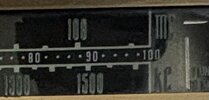hotrodjohn71
New Member
Hi group.
I seem to be getting conflicting results in my research.
If I have a capacitor thats 250 MFD and 16 vdc, will a 250 uf 16dc be the same for replacement?
Some places seem to state that uf is the same as MFD, but some say not.
What do you think?
Thanks,
John

I seem to be getting conflicting results in my research.
If I have a capacitor thats 250 MFD and 16 vdc, will a 250 uf 16dc be the same for replacement?
Some places seem to state that uf is the same as MFD, but some say not.
What do you think?
Thanks,
John
Last edited:


